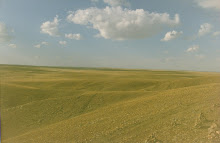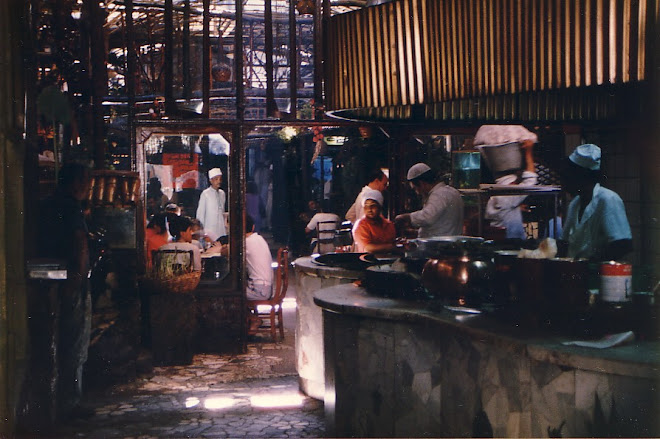The Last Tasmanian Tigers (Thylacinus Cynocephalus)

The very last Thylacine or marsupial Tasmanian Tiger died in Hobart Zoo in 1936.
And what makes this even more galling is the fact that there's the fair amount of film footage of this now extinct large mammal - taken between 1912 and 1932. Mainly at Beaumaris Zoo (later Hobart Zoo) and at London Zoo.
Animals caught in the wild were usually sold to zoos, like this mother and her three pups who were trapped by Walter Jack Mullins at Tyenna in the Florentine Valley in southern Tasmania in February 1924 ...
 Mother and her three pups, trapped by Walter Jack Mullins at Tyenna in the Florentine Valley in southern Tasmania in February 1924
Mother and her three pups, trapped by Walter Jack Mullins at Tyenna in the Florentine Valley in southern Tasmania in February 1924... and then sold to Hobart Zoo. It's very probable that the very last thylacine was one of the pups in this litter.
The earliest tiger footage is from 1912 and shows a thylacine being fed through a wire fence, while the owner of the Beaumaris Zoo, Mary Grant Roberts, stands by. Her long black dress is just visible to the right of the keeper at the beginning.
The next clip was taken in early 1928 and firstly shows a man teasing two tigers with his hat, and then the animals going into their wooden enclosure shed where perhaps they sleep.
This footage below was taken in late 1928 and shows a tiger interacting with a man through a wire fence. What's revealing here is the way the animal moves : rising up easily and steadily on its hind legs a bit like a kangaroo.
This last clip is from 1933 and shows the last thylacine prowling its cage ... and also demonstrating its enormous jaw extension.

There have been countless searches over the decades in more and more remote places for any last surviving tigers - to assuage our collective guilt in this extinction. But of course, nada!
In a further and latter day guilt-reduction exercise, there's a pretty big effort on at the moment to extract DNA from a female infant preserved in alcohol in 1866 ...
... to implant it in the egg of (perhaps) a Tasmanian Devil host and ... well, you know the rest.
Hopefully people have learned the lesson ... what do you reckon?






![C18 Bronze Buddha [Southern China]](https://blogger.googleusercontent.com/img/b/R29vZ2xl/AVvXsEioLkgVKuhDoIHQgM1X6Oe2hGn75yqaj4OJXPmNpumXmQPKxB22S57YS5DVrl1P7zl7BS6EFpAtaNZPze7gzVCRiQI54bwdHhVa4fGr7NOChZwTZoo92gUen6tC5U8gWIy_pv92U0FB38M/s1600/Buddha+%255BBronze%252C+C18%252C+China%255D+1.jpg)













+1998+Cropped.jpg)












That sure was a freaky looking animal!
ReplyDeleteI've heard about the tazmanian devil before, and THOUGHT I heard that they actually found one or two MORE of them out in the wild just recently.
Course, I just MAY be wrong about that! lol
hey greg
ReplyDeleteyep, scary - tho the mother and pups look sweet (and terrified)
there are lots of tasmanian devils about - they are trying to use the devil and its egg as the host for tasmanian tiger DNA extracted from the preserved 1866 specimen
there are tons of faux tiger sightings - there's even a blurry cell phone video - but nothing up close and real
CYA
nick
Hi Nick,
ReplyDeleteThanks for the extra video clips of the Thylacine - a couple of them I had not seen before. Too bad that the Tasmanian Devil's are now endangered with their facial tumour disease - hope it doesn't eventually wipe them out next...Art
hey art
ReplyDeleteyep, seen a couple of docos about the problems that currently face the devils
appalling if they were to go the way of the tigers
there's some consciousness of the importance of preserving native flora nad fauna at the moment - hope this is not being just too hopeful
nick
It would be nice to see that these animals have somehow managed to hang tough in the wilds someplace. It would also be nice to see them again, but do we really want to go through that.
ReplyDeleteThis may sound corny but I wonder if they could etch out a living in their native land.
hey charles
ReplyDeleteyep, it's a very complex issue - complicated by the fact that the attempt to bring them back (so to speak) is as much about guilt as trying to stem the tide of extinction
and u r right, if brought back and re-introduced into the wild, my guess is that they may not survive - there would need to be much better planning than has been the case with many captive raised species re-introduced back into the wild.
and partly that there is that new DNA technology that science is just itching to find some 'legitimate' excuse to use!
there have been some successes - like the re-introduction of one type of falcon in the UK from other populations - the number of breading pairs has increased multifold over the last 20 years
cya!
nick